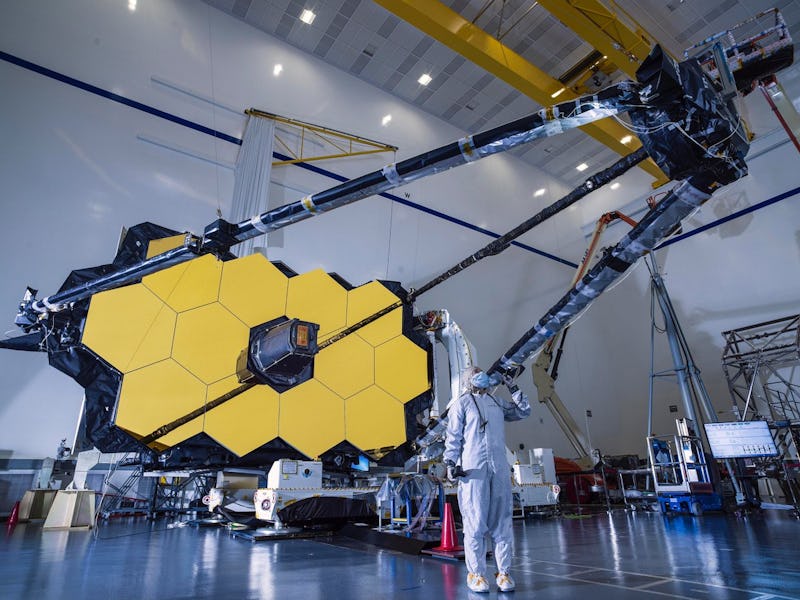The James Webb Space Telescope just passed its most crucial test since launch
NASA confirmed Wednesday morning that Webb succesfully deployed its secondary mirror, officially marking its existence as a functional telescope.

The James Webb Space Telescope has now achieved its most critical milestone since its launch on Christmas Day, paving the way for its auspicious future.
NASA announced Wednesday morning that the observatory had successfully swung the secondary mirror — previously folded up for launch — into place, which is a huge relief for the astronomers hoping to make science observations with Webb. While the observatory could have managed to operate in diminished form with the failure of some other components, the secondary mirror is necessary for the telescope to produce an image at all — no secondary mirror, no telescope.
The successful mirror deployment comes on the heels of Webb’s “tensioning” of its sunshield on Tuesday, using a system of cables to pull five layers of mylar-like material taut, forming a tennis-court sized and kite-shaped barrier to ward off Solar heat and light to protect Webb’s sensitive infrared instruments.
Webb’s sunshield on the ground.
The sunshield and secondary mirror deployments are just two of many tasks required of Webb as the observatory speeds toward Lagrangian Point 2, or L2, roughly a million miles from Earth, the cold and ark vantage point from which Webb will peer into the deepest recesses of the cosmos. As of Wednesday morning, it still has more than 302,000 miles to go.
Why Webb’s secondary mirror deployment is a big deal— The James Webb Space Telescope is a Cassegrain reflector, using a large primary mirror to collect light and focus it onto a secondary mirror, which in turn focuses the light on the telescope’s instruments through a hole in the center of the primary mirror.
At 21-feet in diameter, Webb has the largest primary mirror of any space telescope ever launched and will collect enough infrared light to enable Webb to see the most distant galaxies. It’s composed of 18 hexagonal segments, each of which is individually tunable to provide a precise focus.
That segmented primary mirror design also means the telescope could function with the loss of a segment or more. The telescope would gather less light, but would still function as the most advanced space telescope ever deployed.
But without a secondary mirror to focus light on Webb’s instruments, all that primary mirror technology would be useless. Heidi Hammel, an interdisciplinary scientist on the James Webb Space Telescope project, previously told Inverse that the secondary mirror deployment was the most nerve-wracking part of the telescope's journey to L2.
Hammel tweeted her relief Wednesday morning when NASA confirmed the successful mirror deployment: Not only would they have their telescope, they had it three days ahead of schedule — secondary mirror deployment was originally planned for January 8.
What’s next for Webb?— Now that NASA has confirmed it will indeed have a telescope, attention will turn to fully deploying the primary mirror.
Too large to fit inside a rocket fairing without being folded for later assembly, Webb has been slowly blossoming like a flower since its launch on December 25. The next petals to unfold are the “wings” of the primary mirror, two sections of three hexagonal sections each currently folded back like the leaves of a table.
The primary mirror wing deployment should take roughly two days to complete, after which Webb will be fully deployed, but still far from operational. The observatory must complete its journey to L2 and then undergo weeks and months of calibration and testing before the telescope can finally focus on a scientific target out in the universe.
But for scientists who have been waiting for Webb since the early 2000s, a few more months are not too bad, especially given the success of Wednesday morning’s secondary mirror deployment. Whatever else may happen, the James Webb Space Telescope is now definitely a thing.